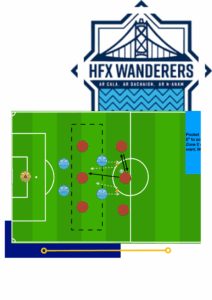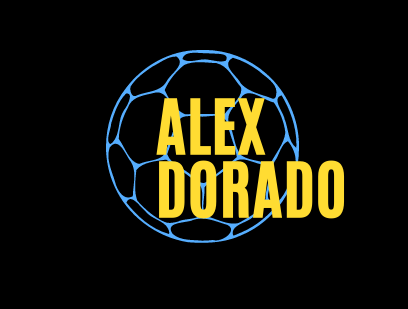
Football with purpose: Train to play, not to repeat
As we’ve discussed before, in this section we’ll talk about training exercises used with teams I’ve coached, putting them into context and explaining the reasoning and objectives behind them.
If you want to understand how they were created and the ideas that led me to this approach, click here.
Context
We’re in the 2022 season at Halifax Wanderers in Canada. We were looking for a drill that would help us work on accelerating play when receiving behind the opponent’s midfielders. A secondary objective was to find that forward pass. We call it a secondary objective because what we really wanted was for the team to understand that when we receive behind the opponent, we must accelerate. The pass itself, we wanted to make easier.
In our weekly schedule, this task was designed for the fifth day of the week (in a Sunday-to-Sunday match cycle), or on days when our focus was sprint situations over long distances. We wanted several players to get a sprint stimulus without the ball, in this case, recovering their position, and enough time for full recovery.

3v2 with support
We split the team into two groups, with the offensive group working in trios and the defensive group in pairs. We used goalkeepers and one goal.
To help with the drill’s flow, everyone was positioned in the center circle, and rotations were made from there.
As shown in the diagram, about 10–15 meters from the center we placed a 3-meter rectangle, where the first offensive trio stood. That was the space to receive the ball, which could not be defended. The second trio, in possession, stood between the rectangle and the center circle. The first defensive pair positioned themselves just outside the box, and the second pair stood between the two offensive trios.
The trio in possession aimed to pass the ball to the players between the lines. Once they received it, they had to make one more pass between them.
The defending pair in the middle had to try and stop the pass, and if they failed, they had to touch a line or cone before recovering to help defend the 3v2 situation.
The trio that received the ball had to accelerate and try to finish as quickly as possible. The second defensive pair waited and had to defend the 3v2, knowing help was coming from two recovering teammates.
Points to consider
- The rectangle can be adjusted in width to make passing more or less difficult. The 3-meter length is usually enough but can be increased based on the level of the players.
- The cones or lines the defenders must touch before recovering can also be adjusted to give attackers more or less time in their advantage.
- We could also modify the number of attackers and defenders depending on the game situations we want to replicate or based on our playing system.
⚽ Want more purposeful training ideas grounded in real game demands?
📲 Follow us on Instagram @alexdoradoteam for session breakdowns, insights from top environments, and game-real exercises for your team.
📚 Explore more articles to deepen your approach to football training — where context defines the content.
